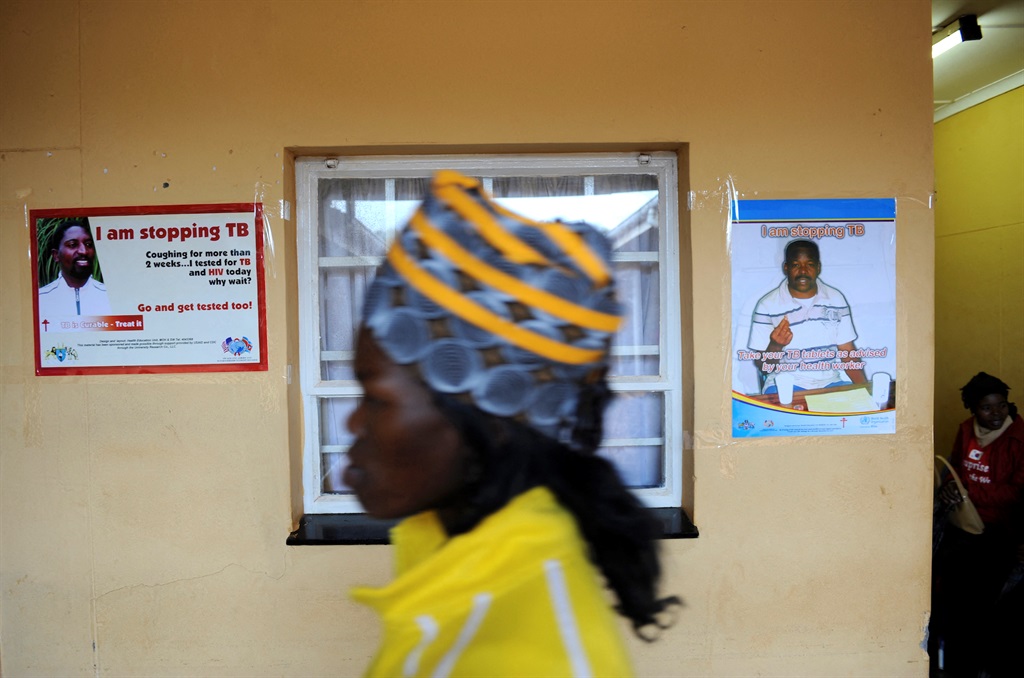With political will and help from abroad, Eswatini is beating HIV/Aids | News24
With political will and help from abroad, Eswatini is beating HIV/Aids News24


Progress in HIV Response in Eswatini

Posters at the Nhlangano health centre in Eswatini encouraging people to get tested for HIV and TB.
STEPHANE DE SAKUTIN / AFP
Key Achievements
- It’s projected that HIV prevalence will decrease to 4,300 cases by the end of 2023.
- HIV transmission from mother to child significantly decreased, from 6.3% in 2017 to 1.2% in 2022.
- The World Health Organisation’s Eswatini division attributed the gains made largely to political will and combined efforts from partners.
A decrease in the annual number of new HIV cases in Eswatini is expected at the end of this year – from 4,800 in 2020 to 4,300 – according to World Health Organisation (WHO) estimates.
In 2020, Eswatini became the first African country to achieve the “95-95-95 targets”: 95% of all HIV-positive people identified, 95% on antiretroviral medication (ART), and 95% of those receiving treatment experiencing viral suppression.
Thanks to that level of treatment, the number of HIV-related deaths has decreased from a peak of nearly 10,000 in 2005 to 2,600 in 2021 and 2,370 in 2022, according to the 2021 UNAIDS report.
At the same time, HIV transmission from mother to child significantly decreased, from 6.3% in 2017 to 1.2% in 2022.
In a statement, the WHO’s Eswatini division said the achievements were largely due to political will and combined efforts from partners.
“The strong leadership at both the political and Ministry of Health (MoH) levels, coupled with WHO Eswatini’s presence, has resulted in a well-coordinated response that also complements the support from partners’ evidence-based, patient-centred care at scale,” the WHO said.
The implementation of the antiretroviral therapy programme in 2003 to increase access to treatment and care services is one of the major achievements that the WHO supported in Eswatini’s HIV response.
So too was moving HIV treatment from nurses and introducing it to support staff in communities.
“As per WHO recommendations, task-shifting of HIV testing services from nurses to lay counsellors, adherence support to peer-peer, and introduction of nurse-led ART initiation was introduced in Eswatini. This allowed for the rapid decentralisation of ART initiation and follow-up care and improved treatment coverage,” the WHO said.
Pepfar
In March this year, the United States (US) celebrated 20 years since its launched its global fight against HIV/AIDS, the President’s Emergency Plan for Aids Relief (Pepfar), under the George Bush administration.
Pepfar has been instrumental all over Africa – a continent that saw an estimated 30 million HIV/AIDS-related deaths since 1982. Adult infection rates in Africa were 6.1% in late 2005, compared to 1% globally, but by 2007, they decreased to 5%, as opposed to 8% globally.
The News24 Africa Desk is supported by the Hanns Seidel Foundation. The stories produced through the Africa Desk and the opinions and statements that may be contained herein do not reflect those of the Hanns Seidel Foundation.
SDGs, Targets, and Indicators Analysis
1. Which SDGs are addressed or connected to the issues highlighted in the article?
- SDG 3: Good Health and Well-being
- SDG 5: Gender Equality
- SDG 17: Partnerships for the Goals
The article primarily focuses on the progress made in HIV/AIDS prevention and treatment in Eswatini, which is directly related to SDG 3 – Good Health and Well-being. The reduction in HIV prevalence and transmission from mother to child also highlights the importance of SDG 5 – Gender Equality, as it emphasizes the well-being of women and girls. Additionally, the article mentions the combined efforts from partners, indicating the relevance of SDG 17 – Partnerships for the Goals.
2. What specific targets under those SDGs can be identified based on the article’s content?
- SDG 3.3: By 2030, end the epidemics of AIDS, tuberculosis, malaria, and neglected tropical diseases and combat hepatitis, water-borne diseases, and other communicable diseases.
- SDG 3.7: By 2030, ensure universal access to sexual and reproductive health-care services, including for family planning, information and education, and the integration of reproductive health into national strategies and programs.
- SDG 5.6: Ensure universal access to sexual and reproductive health and reproductive rights as agreed in accordance with the Program of Action of the International Conference on Population and Development and the Beijing Platform for Action and the outcome documents of their review conferences.
- SDG 17.17: Encourage and promote effective public, public-private, and civil society partnerships, building on the experience and resourcing strategies of partnerships.
Based on the article’s content, the targets mentioned above can be identified. The progress made in reducing HIV prevalence, transmission from mother to child, and HIV-related deaths aligns with SDG 3.3. The achievements in HIV treatment and care services, as well as the involvement of partners, demonstrate progress towards SDG 3.7 and SDG 17.17. The emphasis on gender equality and the well-being of women and girls also relates to SDG 5.6.
3. Are there any indicators mentioned or implied in the article that can be used to measure progress towards the identified targets?
- HIV prevalence cases
- HIV transmission rate from mother to child
- Number of HIV-related deaths
- Percentage of HIV-positive people identified
- Percentage of HIV-positive individuals on antiretroviral medication (ART)
- Percentage of individuals receiving treatment experiencing viral suppression
The article mentions specific indicators that can be used to measure progress towards the identified targets. The projected decrease in HIV prevalence cases and the significant reduction in HIV transmission from mother to child indicate progress towards SDG 3.3. The decrease in HIV-related deaths and the achievement of the “95-95-95 targets” demonstrate progress towards SDG 3.3 and SDG 3.7. The mentioned indicators provide measurable data to assess the success of the efforts in HIV prevention and treatment.
4. Table: SDGs, Targets, and Indicators
| SDGs | Targets | Indicators |
|---|---|---|
| SDG 3: Good Health and Well-being | 3.3: By 2030, end the epidemics of AIDS, tuberculosis, malaria, and neglected tropical diseases and combat hepatitis, water-borne diseases, and other communicable diseases. | – HIV prevalence cases – HIV transmission rate from mother to child – Number of HIV-related deaths |
| SDG 3: Good Health and Well-being | 3.7: By 2030, ensure universal access to sexual and reproductive health-care services, including for family planning, information and education, and the integration of reproductive health into national strategies and programs. | – Percentage of HIV-positive people identified – Percentage of HIV-positive individuals on antiretroviral medication (ART) – Percentage of individuals receiving treatment experiencing viral suppression |
| SDG 5: Gender Equality | 5.6: Ensure universal access to sexual and reproductive health and reproductive rights as agreed in accordance with the Program of Action of the International Conference on Population and Development and the Beijing Platform for Action and the outcome documents of their review conferences. | – Percentage of HIV-positive people identified – Percentage of HIV-positive individuals on antiretroviral medication (ART) – Percentage of individuals receiving treatment experiencing viral suppression |
| SDG 17: Partnerships for the Goals | 17.17: Encourage and promote effective public, public-private, and civil society partnerships, building on the experience and resourcing strategies of partnerships. | – Number of partners involved in HIV prevention and treatment efforts |
Behold! This splendid article springs forth from the wellspring of knowledge, shaped by a wondrous proprietary AI technology that delved into a vast ocean of data, illuminating the path towards the Sustainable Development Goals. Remember that all rights are reserved by SDG Investors LLC, empowering us to champion progress together.
Source: news24.com

Join us, as fellow seekers of change, on a transformative journey at https://sdgtalks.ai/welcome, where you can become a member and actively contribute to shaping a brighter future.







